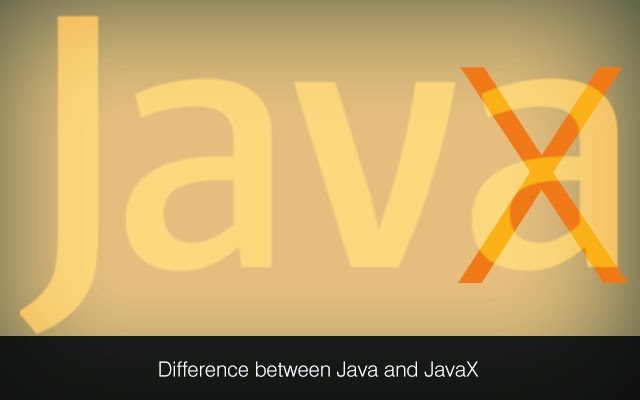Java
and Javax are the packages that are utilized within the Java
programming language. Influenced by the C language, Java derives most of
its syntax from C and C++. However, the facilities that it offers are
superior to the other programming languages. It has been designed to
serve general purposes and is hardly dependent when it comes to
implementation. As compared to the other languages, it is more
object-oriented as well as concurrent and class-based. It was initially
developed at Sun Microsystems by James Gosling. Java was first released
in 1995 as a core component of the company’s Java platform.
What is Java and Javax?
Both
Java and Javax are packages. The command used to bring up a package is
‘import java’ while the one used to bring up java extension package is
‘import javax.’ This programming language is designed in such a way that
it allows the same code to run across various platforms. Therefore, the
developers can write the code once and reuse it on various platforms.
Typically, thus, these applications are compiled with bytecode.
What are the packages?
It
can be defined as a system that is utilized for organizing the Java
classes into namespaces. These help in offering modular programming
within the language. In several ways, the working is quite similar to
the modules of Modula. It is also possible to store these packages
within the JAR files. These are also referred to as the compressed
files. When required the classes are allowed to download quickly,
preferably in the form of groups. Programmers also use these packages in
order to organize the classes belonging to similar categories or offer
functionalities along similar lines.
Generally,
there are various kinds of packages. For instance, the Java API is a
collection of packages and there are sub-packages too. The latter are
utilized to deal with XML. Initially everything that was part of the API
was also included in the java packages. On the other hand, everything
that was excluded in the standard API was a part of the javax.
Therefore, it can be concluded that the latter is just an extension of
the original one.
Benefits of using these
The
codes are reusable. This is an important feature as reusability will
help in saving a lot of time as well as ensure consistency. These
packages allow the usage of the same class again and again by the
program that wants to include the same. Additionally, these are also
great ways to avoid a name space collision.
Is there any demarcation between the two?
Practically,
there is not any difference between the two. In fact, over time, the
use of javax has also become integrally related to the API. However, the
only reason why it is not moved back to the initial package is because
it would be a cumbersome process. It would also lead to the breaking up
of various existing codes that prove quite useful. Rather, both the
packages where included under the API.
Usage
The
programmers use javax for standard extensions. These are also known as
the optional packages. These are subsets of the APIs that are non-core.
There are other segments of the non-core APIs which are also known as
the non-standard extensions. These generally take up the namespaces such
as com.sum. On the other hand, the core APIs would occupy the java
namespace. Since everything in the API does not commence as a core, the
extensions have to be created by sending requests to the JSR. Finally,
they will be promoted as ‘wise counsel.’
What
is notable at this point is that the extension file is found from
Java2. It is missing in the first version of the programming language.
When Swing was released in the javax package the differences between the
two packages were reduced further. Presently, the differences between
them are minimal. You can get in touch with a Java website development company who can help you develop web apps that are stable, scalable and secure.
We provide Java web development services. If you would like to hire a expert Java developer for your development needs, please contact us Mindfire Solutions.

No comments:
Post a Comment